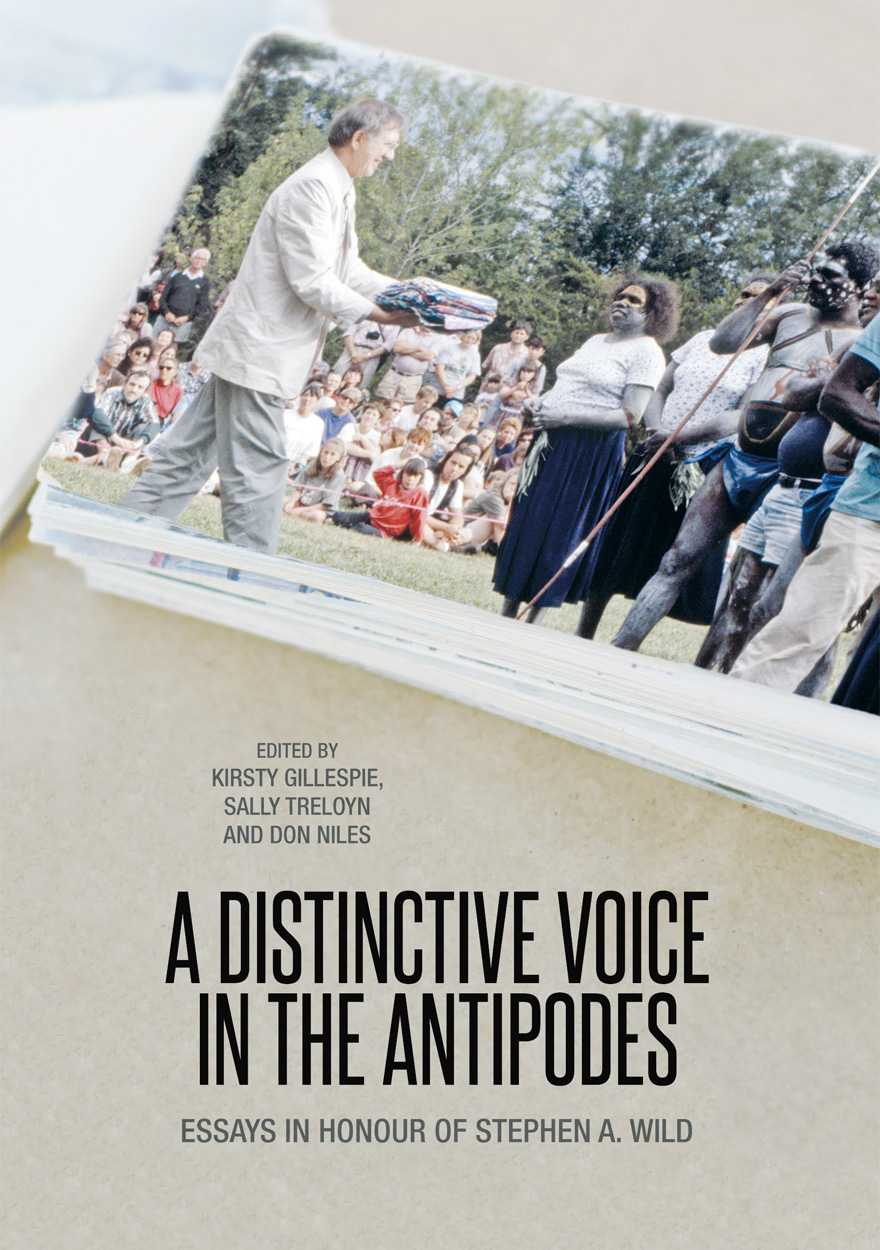Search titles
Displaying results 111 to 120 of 132.

Making Sense of the Census »
Observations of the 2001 Enumeration in Remote Aboriginal Australia
Publication date: March 2004
Special enumeration procedures for Indigenous Australians were introduced in the 1971 Census, and have been a feature of the Australian national census ever since. In 2001, as in previous years, the Indigenous Enumeration Strategy (IES) involved the use of locally recruited, mostly Indigenous, interviewers and the administration of modified forms.
This monograph presents the results of the first detailed comparative appraisal of the IES. Three CAEPR researchers observed the 2001 Census enumeration, each in a different remote-area context: Martin at Aurukun, a major Aboriginal township on Cape York Peninsula, Morphy at a small outstation community in the Northern Territory, and Sanders in the town camps of Alice Springs. The Australian Bureau of Statistics facilitated the research by granting the researchers status as official observers.
The introductory chapter by John Taylor gives a brief history of the IES and sets the context for the research. The three case-studies form the central chapters, and are followed by a concluding chapter that summarises the findings and recommendations.
While each locality had its unique characteristics, the authors found some common problems across the board which lead to general recommendations about the future design of the IES. They advocate a simplification of the enumeration procedure, the abandonment of the ‘two-form’ structure, the focusing of the IES more narrowly on people in ‘traditionally-oriented’ discrete Indigenous communities, and substantial changes in the design and content of any new ‘special Indigenous’ census form.

Subjects and Aliens »
Histories of Nationality, Law and Belonging in Australia and New Zealand
Edited by: Kate Bagnall, Peter Prince
Publication date: August 2023
Subjects and Aliens confronts the problematic history of belonging in Australia and New Zealand. In both countries, race has often been more important than the law in determining who is considered ‘one of us’.
Each chapter in the collection highlights the lived experiences of people who negotiated laws and policies relating to nationality and citizenship rights in twentieth-century Australasia, including Chinese Australians enlisting during the First World War, Dalmatian gum-diggers turned farmers in New Zealand, Indians in 1920s Australia arguing for their citizenship rights, and Australian women who lost their nationality after marrying non-British subjects.
The book also considers how the legal belonging—and accompanying rights and protections—of First Nations people has been denied, despite the High Court of Australia’s recent assertion (in the landmark Love & Thoms case of 2020) that Aboriginal people have never been considered ‘aliens’ or ‘foreigners’ since 1788. The experiences of world-famous artist Albert Namatjira, and of those made to apply for ‘certificates of citizenship’ under Western Australian law, suggest otherwise.
Subjects and Aliens demonstrates how people who legally belonged were denied rights and protections as citizens through the actions of those who created, administered and interpreted the law across the twentieth century, and how the legal ramifications of those actions can still be felt today.

Australian Journal of Biography and History: No. 6, 2022 »
Publication date: May 2022
This special issue of Australian Journal of Biography and History, ‘Writing Slavery into Biography: Australian Legacies of British Slavery’, uses biographical approaches to explore how British slavery shaped the Australian colonies. It is the first stand-alone journal issue to feature an emerging body of historical work tracing the movement of people, investment and ideas from the Caribbean to Australia. Seven refereed articles and a roundtable discussion show how investment, imperial aspiration and migration turned towards Britain's ‘Second Empire’ in the aftermath of the Slavery Abolition Act 1833.
A substantive introduction reviews this emerging field of research and outlines preliminary findings. In her article, Jane Lydon examines the movement of two interconnected families (the Ridleys and Walcotts) from Demerara to Britain to the Swan River, where they acquired large land grants, participated in exploration and resource exploitation, and led the search for labour sources. Georgina Arnott investigates Western Australia’s first governor James Stirling’s biographical links to American and Caribbean slavery in light of ideas about race and labour that he promoted in Western Australia. And together Zoë Laidlaw and Georgina Arnott show how dictionaries of biography can be used alongside the Legacies of British Slavery database (hosted by University College London) to identify Australasian settlers with connections to slavery. They note the ways in which collective approaches to biography can reveal otherwise invisible patterns in global transfers of wealth, people and ideas.
With an eye to regionally specific processes of subjugation and enslavement in the northern Western Australian pearling and pastoralist industries, Malcolm Allbrook considers biography’s potential to illustrate the shadowy world of ‘blackbirding’ in relation to the perpetrators, the officials and the Aboriginal enslaved. Emma Christopher brings to life the colonial legacies of slavery in her account of Albert Messiah, Ishmael Williamson and John Henderson, sailors of African origin who worked on Pacific labour ships during the late nineteenth century, and whose lives illuminate the complex racial hierarchies of the Queensland frontier. Beth Robertson tells the layered story of her own great-great-grandfather, Edward Stirling, the illegitimate son of a British slave-owner and a woman of Ghanaian descent, whose material benefit from slavery helped him become a successful pastoralist and miner in South Australia, despite remaining the subject of racial prejudice.
Paul Arthur and Isabel Smith note the ‘biographical turn’ in museum exhibitions featuring stories of enslavement over the last two decades. They argue that this has enabled exhibitors to show stories of resistance, contingency and agency, albeit while navigating the ethical complexities of telling other people’s traumatic life stories. The feature section of this issue concludes with a roundtable discussion between Catherine Hall, Keith McClelland, Zoë Laidlaw, Jeremy Martens and Georgina Arnott on the topic of linking the legacies of British slave ownership to Australian colonisation. Here, Hall observes that biography, when used in combination with prosopography, reveals how the lives and family trajectories of slave owners were distinguished amongst imperial capitalists at large. This issue builds understanding of the precise ways that slavery shaped the Australian colonies.
Download for free
Not available for purchase

Australian Dictionary of Biography, Volume 19 »
1991–1995 (A–Z)
Edited by: Melanie Nolan
Publication date: March 2021
Volume 19 of the Australian Dictionary of Biography (ADB) contains concise biographies of individuals who died between 1991 and 1995. The first of two volumes for the 1990s, it presents a colourful montage of late twentieth-century Australian life, containing the biographies of significant and representative Australians.
The volume is still in the shadow of World War II with servicemen and women who enlisted young appearing, but these influences are dimming and there are now increasing numbers of non-white, non-male, non-privileged and non-straight subjects.
The 680 individuals recorded in volume 19 of the ADB include Wiradjuri midwife and Ngunnawal Elder Violet Bulger; Aboriginal rights activist, poet, playwright and artist Kevin Gilbert; and Torres Strait Islander community leader and land rights campaigner Eddie Mabo. HIV/AIDS child activists Tony Lovegrove and Eve Van Grafhorst have entries, as does conductor Stuart Challender, ‘the first Australian celebrity to go public’ about his HIV/AIDS condition in 1991.
The arts are, as always, well-represented, including writers Frank Hardy, Mary Durack and Nene Gare, actors Frank Thring and Leonard Teale and arts patron Ian Potter. We are beginning to see the effects of the steep rise in postwar immigration flow through to the ADB. Artist Joseph Stanislaw Ostoja-Kotkowski was born in Poland. Pilar Moreno de Otaegui, co-founded the Spanish Club of Sydney. Chinese restaurateur and community leader Ming Poon (Dick) Low migrated to Victoria in 1953.
Often we have a dearth of information about the domestic lives of our subjects; politician Olive Zakharov, however, bravely disclosed at the Victorian launch of the federal government’s campaign to Stop Violence Against Women in 1993 that she was a survivor of domestic violence in her second marriage.
Take a dip into the many fascinating lives of the Australian Dictionary of Biography.

ANU Historical Journal II: Number 1 »
Publication date: May 2019
The first issue of the revived ANU Historical Journal (ANUHJ) follows in the footsteps of its predecessor, bringing together the writing and research of several generations of Australian historians in a single volume. It begins with seven short memoirs from the editors and contributors of the ANUHJ (1964–87), which together offer an extraordinary window on to the student history of the ANU in the 1960s and 1970s. Following the memoirs, the articles in this issue consider the symbolism of the early Aboriginal Tent Embassy; Louisa Lawson’s involvement in Australia’s suffrage movement through her magazine The Dawn; the changing meanings of barn swallow migration in Europe; how the sexuality of Frederick the Great can shine further light on our understanding of Prussian masculinity; the recent public apologies of two prominent leaders of the Lebanese Civil War: Assad Shaftari and Samir Geagea; evangelical humanitarian discourse in the Australian colonies; and the cultural and religious diversity engraved on one Sicilian tombstone. Elsewhere, contributors contemplate the place of national history amid the rise of transnational and global history, and review some of the leading Australian titles that were published last year.
Download for free
Not available for purchase

Carl Strehlow’s 1909 Comparative Heritage Dictionary »
An Aranda, German, Loritja and Dieri to English Dictionary with Introductory Essays
Edited by: Anna Kenny
Publication date: August 2018
Carl Strehlow’s comparative dictionary manuscript is a unique item of Australian cultural heritage; it is a large collection of circa 7,600 Aranda, 6,800 Loritja (Luritja) and 1,200 Dieri to German entries compiled at the beginning of the twentieth century at the Hermannsburg Mission in central Australia. It is an integral part of Strehlow’s ethnographic work on Aboriginal cultures that his German editor Baron Moritz von Leonhardi published as Die Aranda- und Loritja-Stämme in Zentral-Australien (Strehlow 1907–1920) in Frankfurt. Strehlow and his editor had planned to publish a language study that included this comparative dictionary, but it remained unpublished until now due to a number of complicated historical and personal circumstances of the main characters involved with the dictionary.
Strehlow’s linguistic work is historically and anthropologically significant because it probably represents the largest and most comprehensive wordlist of Indigenous languages compiled in Australia during the early stages of contact. It is an important primary source for Luritja and Aranda speakers. Both languages are spoken in homes and taught in schools in central Australia.
The reasons for presenting this work as a heritage dictionary—that is, as an exact transcription of the original form of the handwritten manuscript—are to follow the Western Aranda people’s wishes and to maintain its historical authenticity, which will prove to be of great use to both Indigenous people and scholars interested in language.

Skin, Kin and Clan »
The dynamics of social categories in Indigenous Australia
Publication date: April 2018
Australia is unique in the world for its diverse and interlocking systems of Indigenous social organisation. On no other continent do we see such an array of complex and contrasting social arrangements, coordinated through a principle of ‘universal kinship’ whereby two strangers meeting for the first time can recognise one another as kin. For some time, Australian kinship studies suffered from poor theorisation and insufficient aggregation of data. The large-scale AustKin project sought to redress these problems through the careful compilation of kinship information. Arising from the project, this book presents recent original research by a range of authors in the field on the kinship and social category systems in Australia. A number of the contributions focus on reconstructing how these systems originated and developed over time. Others are concerned with the relationship between kinship and land, the semantics of kin terms and the dynamics of kin interactions.

Navigating Boundaries »
The Asian diaspora in Torres Strait
Edited by: Anna Shnukal, Guy Ramsay, Yuriko Nagata
Publication date: November 2017
Navigating Boundaries belongs to a new generation of Asian–Australian historical studies. The essays presented here draw on an extensive, widely dispersed body of information, including much unpublished material, in order to narrate stories of the Asian diaspora communities of Torres Strait, north Queensland. Early chapters give an overview of Torres Strait Islander/Asian/European interaction, documenting the experiences of people from the five major Asian communities in the Torres Strait: Chinese, Filipino, Indonesian, Japanese and Sri Lankan. Later chapters inspect the early authorities of Torres Strait, including the former Resident Magistrate and the Protector of Aboriginals. Other chapters examine the contributions to Torres Strait culture made by Asian communities—from ethnic identity, clothing and cuisine, to religion, funeral and burial practices, and with a strong focus on the rich musical culture of Torres Strait Islanders. In the final chapter of the book, a variety of local voices narrate stories of Torres Strait people of Asian ancestry, providing a deeply personal insight into the Asian experience in Torres Strait.

A Distinctive Voice in the Antipodes »
Essays in Honour of Stephen A. Wild
Publication date: July 2017
This volume of essays honours the life and work of Stephen A. Wild, one of Australia’s leading ethnomusicologists. Born in Western Australia, Wild studied at Indiana University in the USA before returning to Australia to pursue a lifelong career with Indigenous Australian music.
As researcher, teacher, and administrator, Wild’s work has impacted generations of scholars around the world, leading him to be described as ‘a great facilitator and a scholar who serves humanity through music’ by Andrée Grau, Professor of the Anthropology of Dance at University of Roehampton, London.
Focusing on the music of Aboriginal Australia and the Pacific Islands, and the concerns of archiving and academia, the essays within are authored by peers, colleagues, and former students of Wild. Most of the authors are members of the Study Group on Music and Dance of Oceania of the International Council for Traditional Music, an organisation that has also played an important role in Wild’s life and development as a scholar of international standing.
Ranging in scope from the musicological to the anthropological—from technical musical analyses to observations of the sociocultural context of music—these essays reflect not only on the varied and cross-disciplinary nature of Wild’s work, but on the many facets of ethnomusicology today.

Indigenous Data Sovereignty »
Toward an agenda
Edited by: Tahu Kukutai, John Taylor
Publication date: November 2016
As the global ‘data revolution’ accelerates, how can the data rights and interests of indigenous peoples be secured? Premised on the United Nations Declaration on the Rights of Indigenous Peoples, this book argues that indigenous peoples have inherent and inalienable rights relating to the collection, ownership and application of data about them, and about their lifeways and territories. As the first book to focus on indigenous data sovereignty, it asks: what does data sovereignty mean for indigenous peoples, and how is it being used in their pursuit of self-determination?
The varied group of mostly indigenous contributors theorise and conceptualise this fast-emerging field and present case studies that illustrate the challenges and opportunities involved. These range from indigenous communities grappling with issues of identity, governance and development, to national governments and NGOs seeking to formulate a response to indigenous demands for data ownership. While the book is focused on the CANZUS states of Canada, Australia, Aotearoa/New Zealand and the United States, much of the content and discussion will be of interest and practical value to a broader global audience.
‘A debate-shaping book … it speaks to a fast-emerging field; it has a lot of important things to say; and the timing is right.’
— Stephen Cornell, Professor of Sociology and Faculty Chair of the Native Nations Institute, University of Arizona
‘The effort … in this book to theorise and conceptualise data sovereignty and its links to the realisation of the rights of indigenous peoples is pioneering and laudable.’
— Victoria Tauli-Corpuz, UN Special Rapporteur on the Rights of Indigenous Peoples, Baguio City, Philippines



